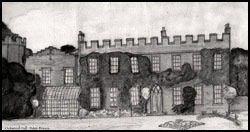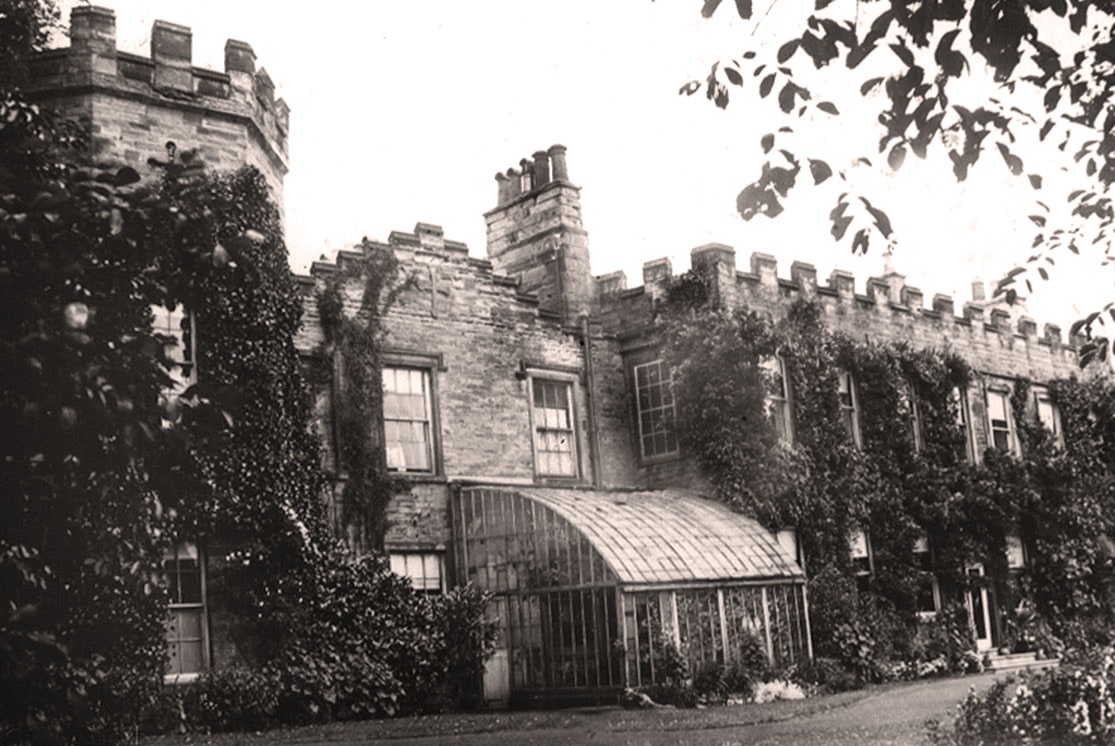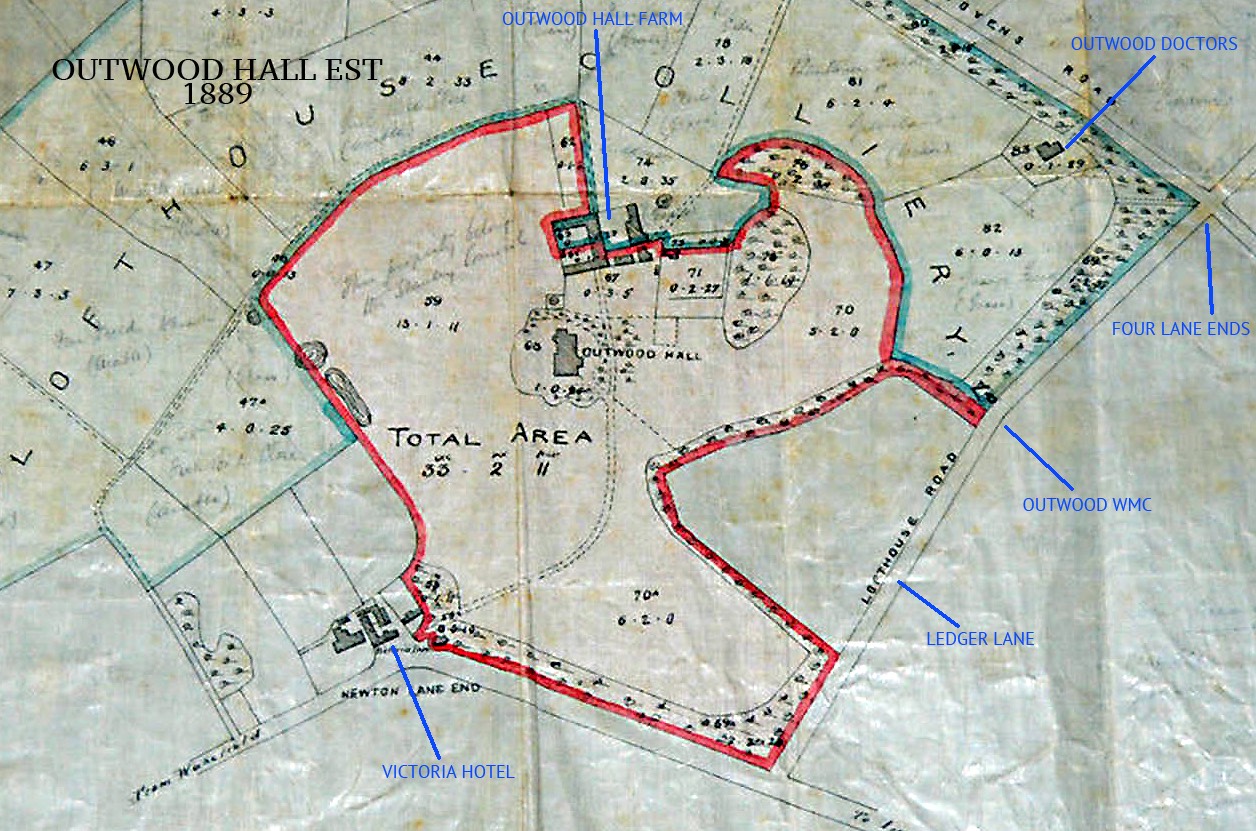
Outwood Hall or Woodside Lodge as it was known, was built about 1709 by the Armytage’s of Kirklees. In a survey of Outwood in 1709 we find an Armytage living in the Lodge. In the Inclosure map of 1793 this building is shown as a large mansion with five wings.
On November 15th,1750, a Mr. Joseph Armytage of The Lodge at Woodside died,and was buried in Wakefield Cathedral where his tomb can still be seen. His Son Samuel now took over the estate, and maintained it until his death on October 6th,1783.
Samuel's son, another Joseph, inherited the estate,and by 1802 he had bought a much greater plot of land surrounding the estate. Part of this land, Cookson Close (the area between Ledger Lane and Park Avenue) he leased to Mr. Samuel Tooker for one year. Joseph's new property must have brought him financial gain, for in 1816 he entirely re-built the hall and hall farm on a lavish scale.
Although he amassed a large fortune he imagined himself to be a pauper at one time, and in 1797 he began to live on the parish poor rate, which granted him 5/- per week. He died on December 1st,1820, and the estate passed to his sister, who had married the Rev.Richard Lucas.
The Rev.Lucas hardly ever stopped at the hall, and in1842 he leased it to Mr.T.H.Marshal for ten years. A deed of April 6th,1853 mentions the lease of Outwood Hall to Mr Henry Briggs for 21 years.
The Rev.Mr.Lucas sold the hall to Mr.Carter in April 1889. Half the estate and out buildings were sold to the Lofthouse Colliery Company in 1891, and then became the property of the National Coal Board. The remainder of the estate and the hall were bought by Mr.Robinson Bramley, who re-sold it in 1926 to Stanley Urban District Council.
The council let the hall for a short time and then, together with the Octagonal Lodge on the Leeds Road it was demolished (the reason for which I am unable to find), and in the 1930s a housing estate was built in the park.
The Hall in its prime was a large stone mansion with an embattled roof. From the front a broad lawn extended down to the fish-ponds and a ha-ha or concealed fence, To the north-west of the hall stood the hall farm,a stone-built structure forming three sides of a square an of similar design to the hall.
Over the central wing is a plaque inscribed J.A.1816. The ornamental lead fall-pipes on the inner angles of the farm are decorated with the Armytage crest, an arm, sleeved in blue, cuffed white, and holding a red spear. This crest, together with the motto' Hodi MiHi Cras Tibi, (turn today, yours tomorrow) is shown on the Armytage monument in Wakefield Cathedral.
Around the estate ran a brick wall of 6-8 feet in height. At the rear of the hall this wall was extended to form a walled orchard, which is still standing. There were two gates to the estate, one on Ledger Lane, and one on the Leeds Road, Nr the. Victoria Hotel.
Peter Brears 1963.


Addendum by John Goodchild.
In 1888 the whole Outwood Hall estate, and that at New Hall in Middleton were offered for sale by auction at the Bull in Wakefield, and the surviving sale particulars and plan are of especial interest, including as they did various farms and plots of land Newton Lodge and the Victoria Inn at Outwood.
Outwood Hall was described as being a stone-built mansion, with entrance lodge, park, plantations, kitchen gardens, vinery, conservatory, stables, coachhouse, cottages, cow house and granary, and with Outwood Farm, containing over 101 acres.
An engraving of the house, a plan of its lay-out and a map of the estate are included in the printed sale particulars.
There was at the time no tenant at the Hall. But at the sale, the Hall was not sold. H M Carter, a member of the firm of brewers at the Victoria Brewery in Market Street in Wakefield, was listed as tenant of the house in the trade directory of early 1887 and it was he who bought the property in 1889.
A further part of the estate and half the outbuildings were sold to the Lofthouse Colliery Co in 1891, from which concern the properties passed to the National Coal Board.
In 1920 the Hall was sold to the Stanley Urban District Council for £3,900, and in1921 the remainder of the parkland was sold to the same authority, who ultimately utilised a large part of the land for the building of council housing, demolishing both the Hall and the Lodge on the Leeds Road.